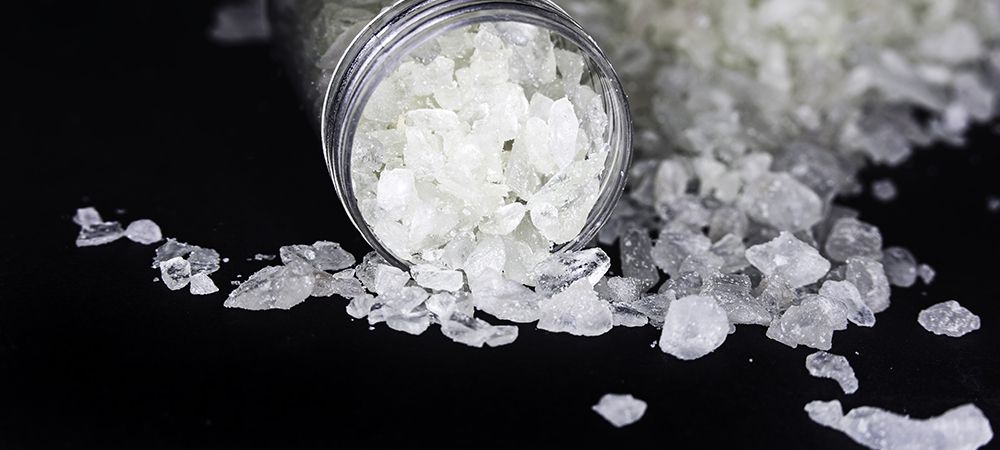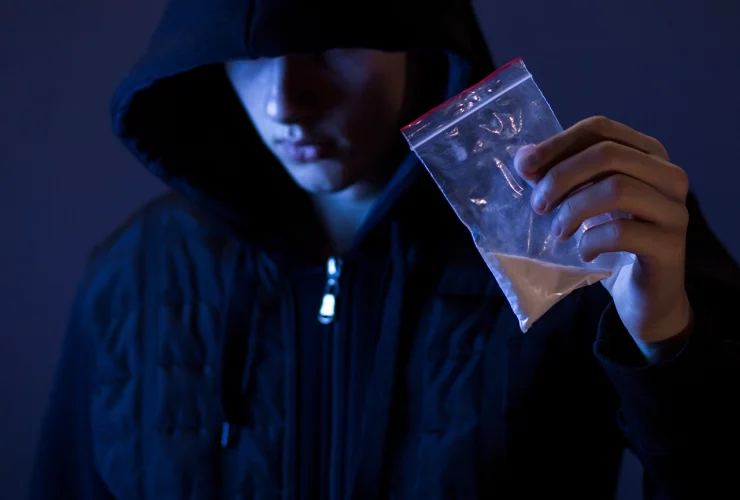What Type of Drug is Crack?
You may hear people use the word crack in discussions about drugs. But what kind of drug is crack? Is it dangerous? What are its effects? We will examine all the answers to these questions further down in this post.
Crack is simply another form of cocaine. Crack or cocaine, whatever you decide to call it, you’ll still be referring to the same dangerous narcotic substance. However, there are few variations between crack cocaine and regular cocaine.
Sadly, cocaine is subject to indiscriminate abuse in powder and rock form. The CTAD reported that approximately 2.6% of Canadians above 15 years of age have a record of cocaine use in 2020. Being a highly addictive drug, we can assume the majority of the reported users have a crack addiction already. That said, let’s take a good look at what cocaine is.
What is Cocaine?
Cocaine is a psychoactive stimulant derived from processing the extract of the leaves of a coca plant. In its pure form, it has a white powder-like appearance and texture. People typically use it in the powdery form by snorting it, rubbing it into their gum or dissolving and injecting it. Interestingly, a little whiff of it can significantly affect a full-grown adult.
However, the pure form of the drug is not readily available. More often than not, drug dealers mix cocaine with other substances to increase the quantity they have to sell. These additions can make the drug more dangerous as it’s difficult to tell the type of material they are or their potency. Also, the user won’t know the actual quantity of cocaine they’re consuming.
Some popular fillers dealers use are amphetamines and fentanyl, which are addictive substances in their own right. The combination of multiple harmful substances can result in a very dangerous concoction. But there are other less harmful additives dealers use, such as cornstarch and flour.
What is Crack Cocaine?
Crack is a processed variant of cocaine that is designed specifically for smoking. Because of the manufacturing process, the final product typically assumes a rock crystal form. So, people also call it rock due to its crystalline structure and its rugged, sharp texture. But to use it, you have to burn it in a glass pipe and smoke it like shisha.
While the primary differences between crack and cocaine are in their appearances, crack is a little more potent. The burning process significantly increases the potency of the drug. Not only that, but people also tend to mix it into marijuana joints and other similar narcotics. Burning these substances together also creates a very potent psychoactive mixture.
Smoking crack cocaine has a more significant effect on the user than regular cocaine. This is because the smoke travels directly through the nostrils to the brain and takes effect faster than when you snort it in powder form. According to descriptions from users, using crack creates an intense “rush” followed by a “crash,” which leaves the user with an extreme craving for more.
When you snort regular cocaine, it takes an average of 5 minutes for the effect to take hold. It peaks around 30 minutes, and everything dissipates within 2 hours. However, it’s very different from crack. The effects of crack take hold almost instantaneously as you’re smoking it. It peaks within 5 minutes and doesn’t last for more than 60 minutes.
Therefore, while you may feel a more intense high when you smoke crack, the effect is often short-lived. Snorting cocaine, on the other hand, takes a while to kick in and lasts longer too. Regardless, neither of the two is desirable, and it’ll be in your best interest to stay clear of them.
Why Do People Use Crack?
Cocaine is quite expensive and not readily available to every average junky on the street. So, crack serves as a cheaper alternative. In addition, its lower cost makes it more accessible for users in the lower socioeconomic demographic. These people cannot afford to purchase the actual cocaine, so they settle for the less expensive and more readily available option in crack cocaine.
However, it’s also plausible that the more intense effect of crack can be the reason many users prefer it. As such, it’s not surprising to find individuals who can afford regular cocaine also using crack. Generally, those who desire a more intense, faster high will opt for crack cocaine.
How Does Crack Addiction Happen?
Crack addiction is an example of substance use disorder (SUD). SUD is a condition that occurs when the continuous usage of a drug alters brain chemistry. The psychological alteration will then result in the user’s inability to discontinue the drug use regardless of the adverse side effects. In other words, when addicted, you become dependent on the drug. The addiction will make you feel a constant compulsive need to take the drug.
The drug alters the brain chemistry by causing an intense flood of neurotransmitters in the reward/pleasure pathway. Originally the release of these chemicals ought only to happen when you do something stimulating. However, consuming crack essentially short-circuits this process and overloads the pleasure pathways.
Continuous use of cocaine overloads the brain with neurotransmitters. It changes the brain’s perception of “stimulation” from exciting activities to crack and other narcotic substances.
The hormones released in the brain by cocaine play an essential role in your motivation levels and feelings of happiness. A decline in the levels of these chemicals (during the cocaine crash) can cause rapid feelings of depression. And to avoid these negative feelings, the user will need to retake the drug. This cycle ultimately leads to changes in the brain structure and often results in dependency.
However, crack addiction isn’t only about developing a dependency on the drug; it goes much further. Over time, with continuous consumption of the substance, the effects of the crack blunt out as you develop tolerance. Thus, you start needing more of the drug to achieve the same euphoric high. So, naturally, you respond by consuming more to satisfy your cravings.
However, consuming more is not the main problem; the most significant cause for concern is, there’s no ceiling to crack tolerance. This is because the more you take, the higher your tolerance levels grow. As a result, the brain and the body continuously adjust to higher levels of crack intake until they can no longer take it.
Then again, crack addiction still goes beyond developing tolerance to the substance. The final point of addiction is when the drug use results in noticeable changes in the user’s behaviour. This occurs when the user begins to lose themselves to the drug. At this stage, it consumes them and renders them unable to function properly.
Therefore, crack addiction encompasses the grip cocaine has on the user’s mind, body and behaviour. I.e. It includes dependence, tolerance and behavioural changes resulting from drug abuse. And, of course, addiction to crack cocaine always comes with a variety of signs and symptoms.
Related Article: 10 Tips to Beat Methadone Addiction
Signs of Crack Cocaine Addiction
While it’s often easy to label someone else a “junky,” crack addicts don’t become aware of their SUD until it’s too late. But, if you know what to look for, you can easily determine if you have a crack addiction. Needless to say, you should quit taking crack anyway regardless of whether you have an addiction or not.
That said, you can use the same criteria to determine if you have a substance abuse problem. If you or your loved one is exhibiting any of the following behaviours, it may be time to get help.
Needing or consuming more crack than usual to get high
Like we said earlier, it’s better to stay off cocaine permanently. However, if you have to take it, watch out for when you start needing higher doses of the same crack to get high. It’s an indicator that you’re building tolerance which is an element of crack addiction.
Experiencing consistent strong urges to take crack cocaine
A tell-tale sign of substance use disorder is increased craving for the substance. You start wanting to use the substance more often than before. At first, the desire may be mild, but it can grow out of control with time to a point in which you won’t be able to contain it.
Experiencing Withdrawal Symptoms when you stop using crack
Withdrawal symptoms are adverse effects experienced by crack addicts when they stop taking it. Popular examples of withdrawal symptoms include anxiety, irritability, stress and depression. If you experience any of these and only feel better after taking crack, something is not right.
Having trouble functioning without crack
Not being able to focus or function properly without crack is a major sign of dependence. An inability to concentrate at school, perform your responsibility at work or behave appropriately at home may be due to crack cocaine addiction. Sadly, it’s never going to get better if you continue taking the crack to function properly. It’ll only keep getting worse as you strengthen your dependence on the substance.
Sacrificing other enjoyable activities for crack use.
Continuous crack use will make you lose interest in many relatively exciting activities such as sports and hangouts. However, the process is gradual; you won’t wake up one morning and stop liking sports. Instead, you’ll first stop deriving fun in performing the activities and then slowly lose interest, or rather, you’ll shift the interest to crack.
Inability to stop using crack even with your best effort and intentions
Most people come to full awareness of their addiction when they try and fail to stop using the substance. Before that time, you may feel you’re simply having fun, and you can stop whenever you want. However, it doesn’t always work that way. At this point, you’re thoroughly addicted to the substance and need professional help to get clean. It takes tremendous willpower for a person to quit crack on their own without external help.
Effects of Crack Cocaine
Fundamentally, crack is still cocaine, so it has the same effect as pure cocaine. However, the main difference is that crack often has a very intense albeit short-lived effect. The common effects of crack include:
- Euphoria
- DIlated pupils
- Increased heart rate
- Increased awareness and alertness
- A momentary burst of strength, motivation (juicing up)
- Decreased appetite
- Intense Cravings
Adverse Effects of Crack Cocaine
Aside from its apparent addictive nature, there are many things you need to be wary of if you use crack regularly. The first is the unpredictability of its effects, given that you can’t ascertain its purity. Plus, the process of burning the crack also increases its side effects. That said, below are some of the common side effects of smoking crack.
- Psychosis– a state of distorted reality and deranged personality
- Feelings of paranoia
- Anxiety and or panic attacks
- Impaired judgement usually resulting from the state of psychosis
- Increased irritability
- Restlessness/ loss of sleep
- Loss of appetite which can lead to malnutrition
- Nausea
- Palpitations and cardiovascular issues
- Headache, brain damage and seizures
- Respiratory conditions. For instance, lung damage, asthma, difficulty breathing, chronic cough and lung infections.
- Exhibition of violent or unpredictable behaviour
- Muscle twitches
- Varying degrees of depression
- Sexual dysfunction
- Organ failure
- In extreme cases, death.
Related Article: Drug Rehab Guidance for Better Mental Health
Summary
Crack addiction is a terrible experience, and you don’t want to fall victim to it. The best way to avoid falling into substance use disorder is to avoid the substance in the first place. Stay off cracks, and if for any reason you need to take cocaine, take the pure variant. Also, seek the opinion of a professional on the appropriate dosage to avoid addiction.
However, if you already have a history of crack abuse, it’s never too late to get clean. You can shake off your crack addiction with the help of professionals. If you need assistance, check out our cocaine addiction treatment services today at Inspire Change Wellness Centre. Let’s help you on your journey to recovery.




